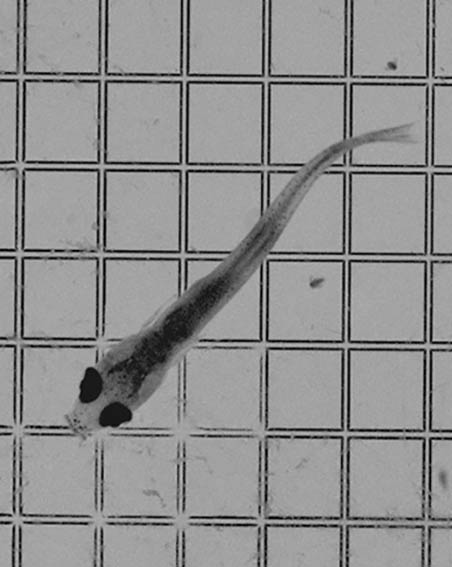Factsheet – Evaluation of sub-lethal effects of neurodegenerative cyanotoxins on predator-prey interactions in a freshwater fish
A research project funded by the Indiana Water Resources Research Center through the U.S. Geological Survey’s 104B annual base grants (section 104 of the Water Resources Research Act of 1984, as amended).

Start Date: 2018-03-01
End Date: 2019-02-28
Total Federal Funds: $15,000
Total Non-Federal Funds: $30,030
Cyanobacteria are prevalent blue-green algae that impact Midwestern freshwater systems, important environmental and economic resources. Emerging evidence suggests that exposure to neurotoxic compounds can induce sub-lethal behavioral and central nervous system (CNS) changes that have the potential to affect individual fitness. Because behaviors are regulated though the CNS and proper neuronal function is essential to organismal responses to relevant ecological stimuli (e.g., predators, prey, or abiotic environmental cues), neurodevelopmental disturbances could (i) reduce larval recruitment to adult stocks, resulting in declines in native population densities and altered community function, and/or (ii) accelerate the rate of transfer through the food chain through increased predation risk. The long-term goal of this research is to evaluate the significance of emerging algal neurotoxins for fish populations and aquatic communities.
Research Objectives
1. Establish behavioral lowest observed effect concentrations (LOECs) for cyanotoxins, β-N-methylamino-L-alanine (BMAA) and its isomer 2,4-diaminobutyric acid dihydrochloride (DABA). A range-finding study was conducted to evaluate whether or not sub-lethal behavioral alterations are evident at cyanotoxin concentrations below those commonly reported in Harmful Algal Bloom-affected waters.
2. Evaluate the extent and mechanisms of behavioral impairment in larval fish exposed to algal neurotoxins. A series of behavioral assays were conducted to evaluate if changes in sensorimotor function directly increase predation risk by impairing escape performance, and indirectly increase predation risk by reducing foraging success and affecting body condition.
3. Determine the long-term consequences of exposure. Fish larvae exposed to cyanotoxins were reared in freshwater until maturity and subjected to a suite of performance assays to evaluate if there are changes in motor function associated with developmental exposure to algal neurotoxins persist into the later life stages.

Fish larvae used in a behavioral trial.
Researcher Profile

Major Conclusions & Significance
What Does This Mean For Indiana?



